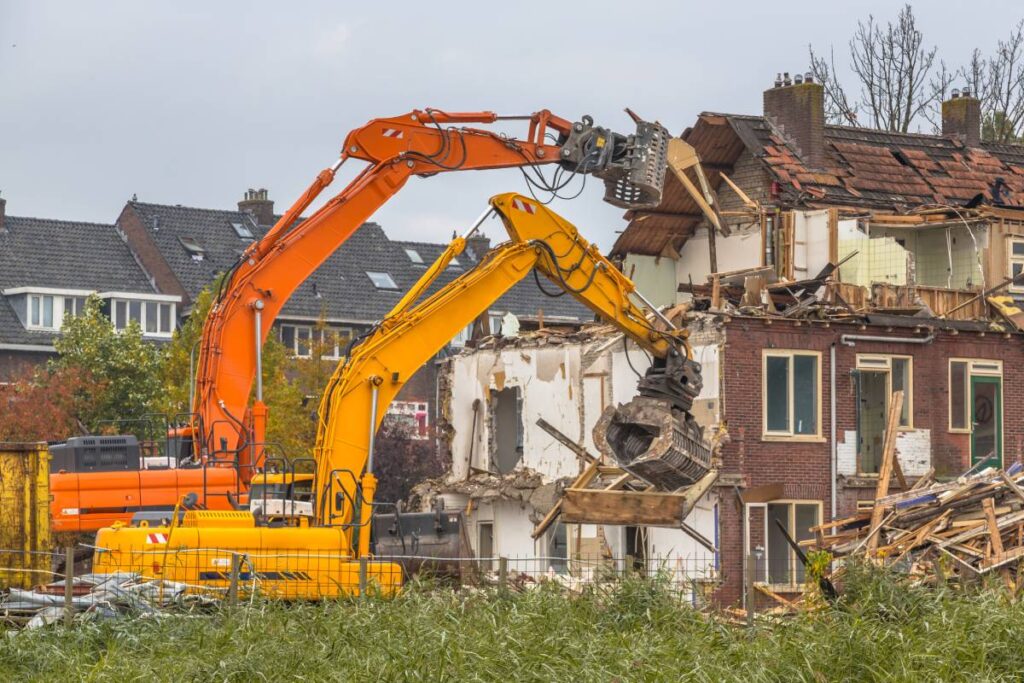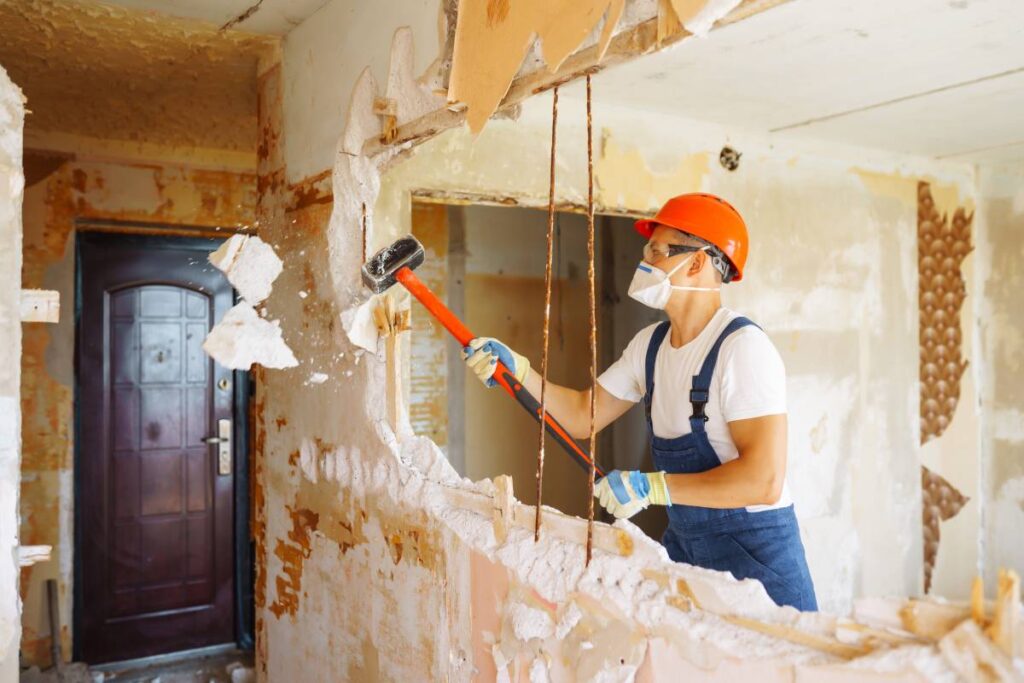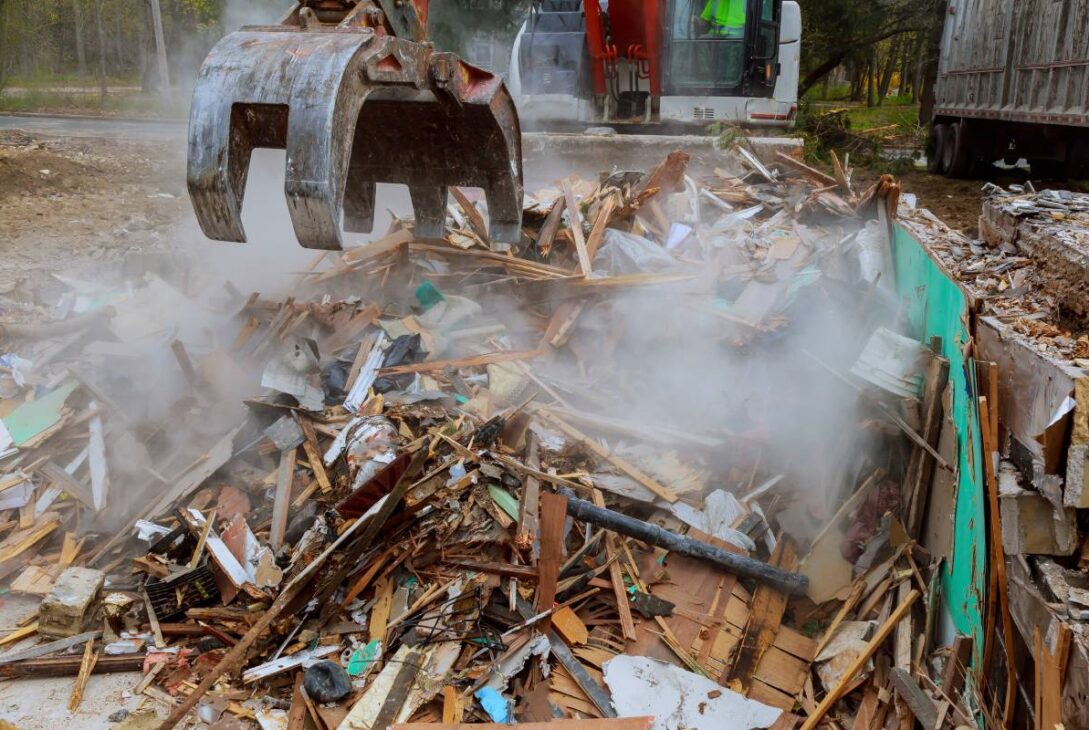Imagine you’ve just snagged a piece of land in your dream neighbourhood, but the existing house on it doesn’t quite match your vision. Or maybe you’re already settled in an area you love, but your current home feels cramped, outdated, and in need of a major upgrade.
In these scenarios, renovating might cross your mind as a solution. But have you considered the option of a knockdown rebuild? It’s a chance to start fresh and design a brand-new home that better suits your lifestyle.
If you’re contemplating this route, it’s crucial to have a clear idea of the potential costs involved.
Related article:
What is a knockdown rebuild?
A knockdown rebuild is exactly what it sounds like: tearing down an existing house and constructing a new one in its place. It’s like hitting the reset button on your home, but instead of renovating or adding on, you start from scratch. This process has become increasingly popular for homeowners who want to stay in the same location but desire a fresh start with a brand-new home.
Imagine you have a house that’s outdated, too small, or just not meeting your needs anymore. Maybe it has structural issues or doesn’t match your lifestyle. Rather than trying to fix these problems piecemeal, a knockdown rebuild offers a comprehensive solution.

Here’s how it typically works
First, you’ll need to assess whether a knockdown rebuild is feasible for your property. Factors like local regulations, zoning laws, and the condition of your current house come into play. You may need to obtain permits and approvals from the relevant authorities.
Once you’ve cleared these hurdles, the demolition phase begins. This involves safely dismantling and removing the existing structure. It’s essential to hire experienced professionals for this task to ensure it’s done safely and efficiently.
With the old house out of the way, the construction of your new home can commence. This is where the fun begins! You have the opportunity to design a custom home that perfectly suits your tastes, preferences, and lifestyle. Whether you dream of a spacious open-plan living area, a gourmet kitchen, or a luxurious master suite, the possibilities are endless.
Throughout the construction process, you’ll work closely with architects, builders, and other tradespeople to bring your vision to life. They’ll handle everything from laying the foundation to putting on the roof, ensuring that each aspect of your new home meets high-quality standards.
Of course, building a new house is a significant undertaking that requires careful planning and attention to detail. You’ll need to consider factors like budget, timeline, and any specific requirements or features you want to incorporate into your design. Working with professionals who have experience in knock-down rebuild projects can help streamline the process and minimize potential challenges.
One of the significant advantages of a knockdown rebuild is the ability to maximize the potential of your land. By starting fresh, you can optimize the orientation, layout, and design of your home to take full advantage of natural light, views, and outdoor space. This can enhance your quality of life and increase the value of your property over time.
Additionally, a knockdown rebuild allows you to avoid many of the headaches associated with renovations or extensions. You won’t have to deal with the limitations of existing structures or worry about hidden problems lurking beneath the surface. Instead, you’ll have a brand-new home built to your specifications, with modern amenities and energy-efficient features.
In summary, a knockdown rebuild offers a practical and efficient way to create your dream home without the hassle of extensive renovations or moving to a new location. It allows you to start fresh and design a custom home that reflects your style, needs, and preferences. With careful planning and the right team of professionals, you can turn your vision into reality and enjoy the benefits of a brand-new home for years to come.

How much does it cost to demolish a house?
Demolishing a house is like breaking down a big Lego creation, but with more machinery and less fun. The cost of demolishing a house depends on various factors, such as the size of the house, its location, the materials used, and the method of demolition. Let’s break it down into manageable pieces to understand better.
First off, the size of the house plays a significant role. Just like how a larger pizza costs more than a smaller one, demolishing a bigger house will be pricier. More materials to clear away and more labour required equals a higher bill.
Location matters too. If your house is nestled in a bustling city, expect the demolition costs to be higher. Accessibility, permits, and local regulations can all impact the price tag. Also, if your house is in a remote area, transportation costs for machinery and disposal might hike up the overall expense.
The materials your house is made of also influence the demolition cost. A house made of wood is generally easier (and cheaper) to demolish than one made of concrete or brick. Plus, some materials might require special handling or disposal methods, which can add to the bill.
Then there’s the method of demolition. You’ve got two main options here: manual or mechanical. Manual demolition involves people using tools like sledgehammers and excavators to tear down the house bit by bit. It’s like a giant game of controlled destruction. On the other hand, mechanical demolition relies on heavy machinery like bulldozers and wrecking balls to bring down the house quickly and efficiently, albeit more noisily. The method you choose will affect the cost, with mechanical demolition generally being more expensive due to the equipment involved.
Now, let’s talk numbers. How much does it cost to demolish a house in Australia? Well, it’s a bit like a guessing game with a range of factors coming into play. Depending on where you are in the country, the cost can vary. In general, though, you’re looking at anywhere from $12,000 to $40,000.
The final bill hinges on several things. Firstly, there’s the size, type, and location of the house. A bigger house might mean more work, so expect the price to reflect that. Then there’s accessibility – if it’s easy for the demolition crew to get in and do their thing, it might cost you less.
Demolition companies often use a cost per square meter to give you an estimate. Here’s a rough breakdown for some major cities:
- Sydney: $53 to $114 per square meter
- Melbourne: $40 to $105 per square meter
- Brisbane: $40 to $85 per square meter
- Adelaide: $38 to $100 per square meter
- Perth: $35 to $98 per square meter
These numbers can give you a ballpark figure, but remember, every job is unique, so it’s always a good idea to get a personalized quote.
But wait, there’s more! Demolition costs don’t just stop at knocking down the house. You’ll also need to factor in expenses for things like asbestos removal (if your house contains asbestos), site clearing, and debris disposal. These additional costs can add up quickly, so it’s essential to budget for them accordingly.

Asbestos removal
Asbestos, a hazardous material commonly found in homes built between the 1940s and 1980s, can significantly increase demolition costs. It’s a big deal because removing it requires specialized skills and certification.
Only licensed professionals are allowed to handle asbestos removal due to the risks involved. These experts undergo specific training to safely handle, remove, and dispose of asbestos, as mandated by state or territory laws.
There are two main types of asbestos you might encounter: bonded asbestos, which is attached to surfaces like cladding, and friable asbestos, which is loose. Both types were used in construction, particularly for fireproofing and insulation.
Removing asbestos can be pricey. For example, removing external cladding with asbestos might set you back $4,000 to $5,000, while tackling internal cladding in a single room could cost between $1,000 and $1,500. If your roof contains asbestos, expect to pay anywhere from $3,500 to $5,500 for removal. These costs vary based on the amount of asbestos present and its location on your property.
What permits do you need to demolish a house?
Just like with any construction work, getting the right permits is crucial. Before you even think about swinging that wrecking ball, make sure you have the green light from your local council.
To avoid getting caught out and facing fines, it’s essential to understand the rules and regulations specific to your area. Here’s a checklist to help you navigate the permit process:
- Figure out which permits you need for the demolition job.
- Calculate the costs associated with obtaining these permits.
- Find out where and how to apply for the necessary permits.
- Follow the correct application steps, considering how this might affect your overall demolition timeline.
- Create a checklist to ensure you have all the required paperwork and photos ready to go. If asbestos is involved, be prepared for additional documentation.
When applying for permits, you’ll likely need to provide the following information:
- Detailed site plans showing the structures earmarked for demolition.
- Photographs of the building and surrounding properties.
- Official documents proving your ownership of the land.
- Details of the approved demolisher or contractor, including their registration and insurance information.
- Proof of public liability insurance.
- A comprehensive description of the demolition project.
- Plans outlining measures to protect neighbouring properties.
- A waste-disposal plan detailing how you’ll handle the debris.
Keep in mind that the costs mentioned here are just rough estimates and can vary depending on your location and market conditions. It’s always best to check with your local council for the most accurate information regarding permit requirements and costs.

















